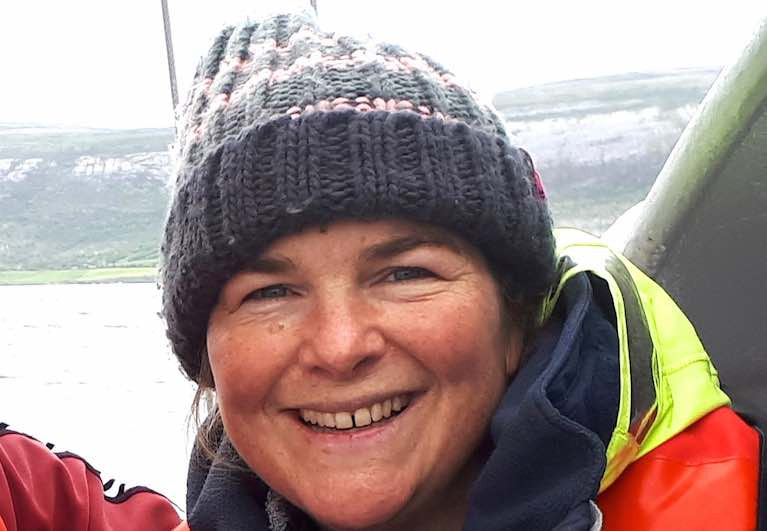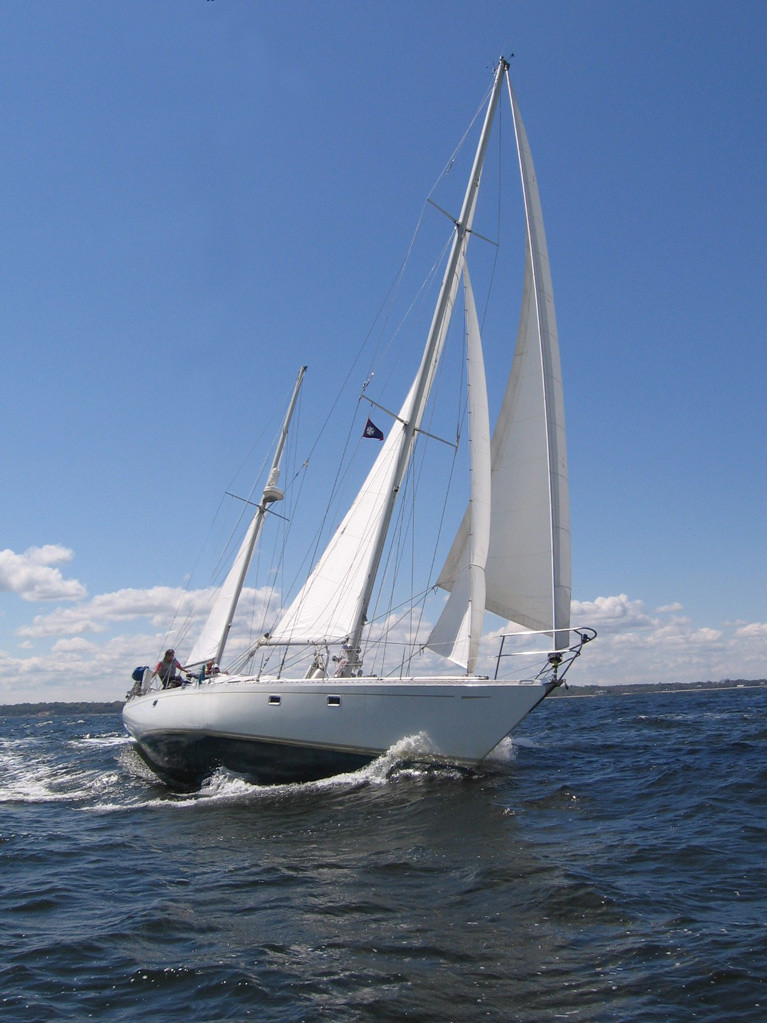Displaying items by tag: Vera Quinlan
Galway Voyager & Marine Scientist Vera Quinlan Joins Board of Irish Sailing
Noted ocean voyager Vera Quinlan has joined the Irish Sailing Board of Directors, where she will head up the Cruising Policy Group.
Vera (of Galway Bay Sailing Club) began sailing at the age of 10 on Lough Derg. She started in a Mirror, then moved to a Laser, and spent many years cruising with her parents in Ireland, France and Scotland. She sailed from Sydney to Hobart in 1988 on board the Sail Training Brigantine Asgard II, and in 2004 fulfilled a lifelong ambition to skipper a yacht across the North Atlantic.
In 2019/20 Vera fulfilled another ambition: an Atlantic-circuit sailing adventure with her family. On board their yacht Danú, a 43 ft Bruce Roberts Mauritius, she and her husband Peter Owens and children Lilian (11) and Ruairi (9) spent fourteen months travelling. Highlights included climbing and hiking in the Pico de Europa, crossing the Atlas Mountains on foot with mules, riding camels in the Sahara, sailing transatlantic in the Trade Winds, exploring the Amazon rivers of French Guiana, and spending ‘lockdown’ in Barbuda exploring its pristine reefs before returning via the Azores and on to Ireland, where she and her family became the Afloat.ie "Sailors of the Month" for July 2020 in recognition of their successful and very complete voyage.
Vera is an active member of Galway Bay Sailing Club and previously held the position of Rear Commodore Training. She is involved in all aspects of cruising through both the Irish Cruising Club and the Ocean Cruising Club. She studied a BSc in Marine Science and Hydrography at Liverpool John Moores University and followed a career in deep water 3D seismic exploration. In 2006 she began work at the Marine Institute of Ireland in Galway and concurrently was awarded an MSc in Coastal Zone management. She is currently working as a marine scientist on INFOMAR, Ireland’s seabed mapping programme.
Vera is delighted to be able to support Irish Sailing as a board member, and commented: “As a fan of Jacques Cousteau the sea has certainly cast its spell on me…. at sea, I truly feel alive."
Today, all being well, a flotilla of eight boats will be leaving Antigua, bound Transatlantic for Europe in the hope of being well clear of the Caribbean before the hurricane season sets in. Included in the group will be the Galway Bay 39ft ketch Danu with Marine Institute scientist Vera Quinlan, her husband Peter Owens and their two children Lillian (12) and Ruari (10).
In all, there are about 150 Ocean Cruising Club boats spread through the Caribbean, and anxious to get clear of the sometimes extreme Covid-19 lockdown in the islands. Ocean CC Vice Commodore Daria Blackwell has been much involved in advising and coordinating this movement, working from the home on the shores of Clew Bay in Mayo where she lives with husband Alex Blackwell.
 The Quinlan-Owens family’s ketch Danu hopes to depart Antigua today for the almost 4,000-mile voyage back to Ireland, possible with a brief stop at the Azores. Photo: Peter Owens
The Quinlan-Owens family’s ketch Danu hopes to depart Antigua today for the almost 4,000-mile voyage back to Ireland, possible with a brief stop at the Azores. Photo: Peter Owens
Some of the crews in the Caribbean have experienced decidedly harsh lockdown treatment at the hands of the island authorities, and while many are prepared to sail non-stop until they reach their own home waters, others are encouraged by the fact that the authorities in the Azores have indicated that they will do everything possible within their own restrictions to help the voyagers on their way.
Included among the voyaging hopefuls is Garry Crothers from Derry and Lough Swilly Yacht Club with his 43ft aluminium cruiser Kind of Blue, whose problems are particularly acute as expected crew have been unable to join him, and when he says he may have to sail single-handed, he really means it as he lost an arm in an accident some years ago.
More on this story and others in this account in the Guardian newspaper here and in this interview on the BBC World news here
























